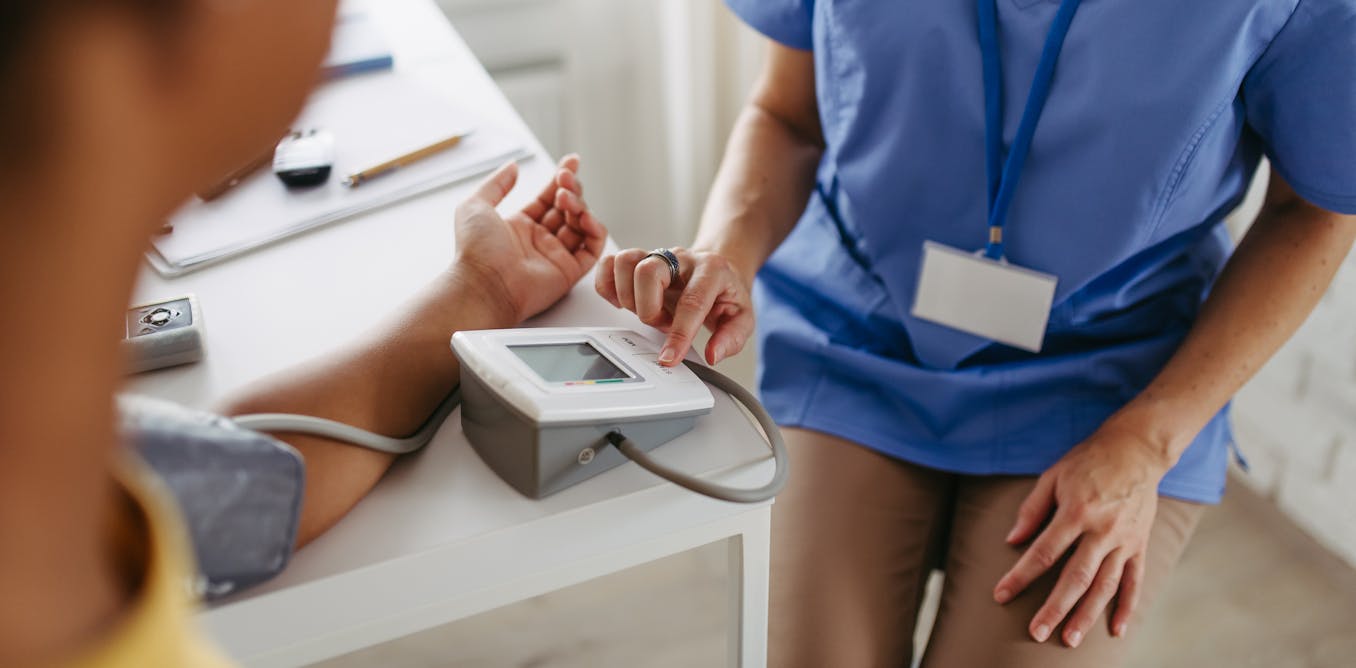PERRIE Edwards landed in hospital after she suffered a panic attack.
The Little Mix star, 31, said it felt so bad that she believed she might die.
5

5

5
“I thought I was having a heart attack,” the Forget About Us singer explained.
Speaking of her ongoing battle with anxiety on Fearne Cotton’s Happy Place podcast, she continued: “I even asked my mum if she was going to put me in a mental institute at one point.
“Cause it was so bad. And I couldn’t make sense of it all in my head.”
The singer, who launched her solo career earlier this year, said she is now tackling it with the help of a therapist.
Read more on panic attacks
So what exactly is a panic attack? And why can they feel so similar to heart attacks?
What is a panic attack?
A panic attack is a sudden wave of overwhelming fear and anxiety that is joined by real-life physical symptoms.
This is different to general panic, which everyone can feel at times.
For some people, it can produce the same sensations as a heart attack, including chest pain and tightness, or a racing heartbeat.
Both can also lead to difficulty breathing, feeling very faint, sick, sweating, and numbness in the arms.
According to Healthline, a person who is having a panic attack might not speak as clearly and coherently as they normally would because they’re dealing with severe anxiety.
But in some cases, despite the intense feelings happening inside, a person’s appearance can mask their distress.
Symptoms can vary from person to person, but according to the NHS can generally include:
- A racing heartbeat
- Feeling faint
- Sweating
- Nausea
- Chest pain
- Shortness of breath
- Trembling
- Hot flushes
- Chills
- Shaky limbs
- A choking sensation
- Dizziness
- Numbness or pins and needles
- Dry mouth
- A feeling of dread or fear of dying
- A churning stomach
- A tingling in your fingers
- Feeling as if you are not connected to your body
Most panic attacks tend to last between five and 20 minutes – but some have been reported to last up to an hour.
Although panic attacks can be really frightening, they’re not dangerous.
An attack will not cause you any physical harm, and it’s unlikely you’ll be admitted to hospital if you have one.

5

5
How to tell the difference between a heart attack and panic attack
Chest pain? Heart palpitations? Shortness of breath?
Are you having a heart attack or a panic attack?
It can be really hard to tell the two apart, said Dr. Glenn N Levine, chief of cardiology at the Michael E. DeBakey VA Medical Center in Houston.
“But if in doubt, one would want to err on the side of caution and be quickly evaluated in an ER (A&E) to make sure this was not a heart attack,” he wrote on Heart.
Heart attacks can be sudden and intense, but they often begin gradually, with mild pain or discomfort that worsens over several minutes.
These episodes may come and go multiple times before a heart attack actually takes place.
A heart attack happens when blood flow to the heart muscle is severely reduced or cut off, typically due to a blockage in the coronary arteries.
If you think you’re having a heart attack, you should call 999 for an ambulance immediately
A lack of blood in the heart caused by a heart attack may seriously damage the heart muscle and can be life-threatening.
If an ambulance shows your heart health is good, then you might have had a panic attack.
This is especially likely if intense fear, the hallmark symptom accompanies the physical symptoms.
Thea Gallagher, an anxiety expert and clinical psychologist at NYU Langone Health in New York City, often sees people who have a clean bill of health but are still convinced something is physically wrong with them.
They’re not incorrect, she said.
“It’s not all in your head. It’s the fight-or-flight response. The alarm system is going off.
“But with a panic attack, it’s burnt toast – not the house on fire,” Thea said.
How to manage panic attacks
Panic attacks can be frightening, but there are things you can do to help yourself cope.
It could help to screenshot these tips, or write them down, and keep them somewhere easy to find.
During a panic attack:
- Focus on your breathing. It can help to concentrate on breathing slowly in and out while counting to five
- Stamp on the spot. Some people find this helps control their breathing
- Focus on your senses. For example, taste mint-flavoured sweets or gum, or touch or cuddle something soft
- Try grounding techniques. Grounding techniques can help you feel more in control. They’re especially useful if you experience dissociation during panic attacks
After a panic attack:
- Think about self-care. It’s important to pay attention to what your body needs after you’ve had a panic attack. For example, you might need to rest somewhere quietly or eat or drink something
- Tell someone you trust. If you feel able to, it could help to let someone know you’ve had a panic attack. It could be particularly helpful to mention how they might notice if you’re having another one, and how you’d like them to help you
Source: Mind




